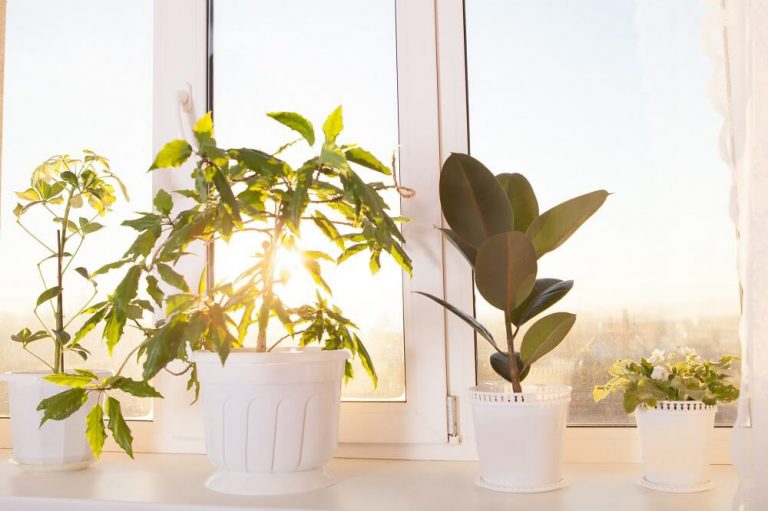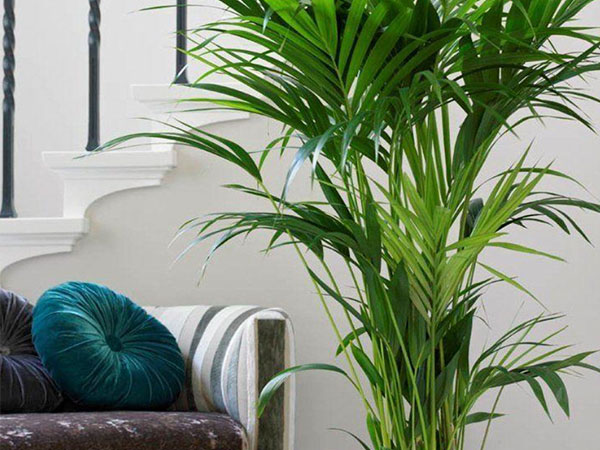How to Take Care of Your Indoor Plants in the Middle East
Houseplants can add the right amount of intrigue and liveliness to your home space. Apart from brightening up your home or office, houseplants are excellent purifiers of the air that we breathe.
There are a lot of Indoor plants that grow extremely well in the Middle Eastern hot climate. Light, water, temperature, humidity, potting, and pest control are some conditions that play essential roles in the journey of your indoor plant’s growth. If these conditions are steadily maintained, your houseplants will survive and thrive in a healthy living space.
Here are some great tips and guidelines to keep your houseplants healthy, happy and thriving.
Light
Plants need sunlight for photosynthesis and growth. So give your plants ample sunlight. The required light exposure levels can differ from one plant type to another; some plants require low light levels whereas others require high light levels to grow. As a plant parent, you should be aware of the intensity and the duration of the sunlight your plants are exposed to.
- Plants like cacti can tolerate bright light and can be conveniently placed near the south-facing windows of your house.
- Plants that require moderate levels of light thrive when placed near east and west-facing windows.
- Low light tolerance plants are best kept near North facing windows.
- To prevent legginess and to get the right exposure of light for even plant growth, make sure you rotate your house plant every once in a while.
- If your apartment is not particularly bright with no proper light conditions to be procured, seek the help of artificial fluorescent light. It acts as an excellent supplement for growth light indoors.
- Legginess, stunted/spindly growth, loss of lower leaves indicates that your plants are not receiving an adequate amount of light. Indicators of too much exposure to light may include scorching of the edges of plant leaves or bleached-out appearance of the leaves. It’s always wise to keep an eye out for these simple indicators.
Water
Different plants require different extents of water levels. The most common mistake a plant parent can make is overwatering their houseplants. Excess levels of water can lead to premature growth and rotting of roots. Most houseplants can’t tolerate high levels of water while some succulents can go on for months without water. Make sure the bottom of your house plant’s pot has a few drainage holes, repot the plant immediately to one with drainage holes if your houseplant doesn’t have drainage holes. Always use room temperature water to shower your house plants.
These are few ways you can check if your houseplant requires water;
- Probe your plant soil up to its rooted area to ensure that the soil is dried. If the soil is found to be dry, you can start to water the plant.
- Lifting the plant pot can oddly signify the need for water for your houseplant. If the plant pot appears to be heavy, it is said to have enough water in it already. If the plant pot is lighter, it is exactly the right time to shower it with some water.
- You can use a moisture meter, it is a scale that gives you readings on how dry the soil is.
- If your plant is wilting, this might be a cause of the plant not getting sufficient water.
- Watch out for crispy and brownish edges/tips of your houseplant leaves, this usually indicates that your houseplant is lacking adequate water. If the edges of your houseplant’s leaves are brown yet mushy, this is a sign that the plant has been overwatered.
Temperature
Most tropical houseplants prefer temperatures of 65°C – 75°C in the daytime and approximately 10°C degrees cooler at night. You can always adjust and maintain a steady temperate environment for your houseplants by regulating the thermostats in your household.
- To prevent overheating and dying of plants, always make sure your houseplants are not kept near heat sources nor cold drafts.
- To prevent fading off of leaves, houseplants should be kept in a place where there is no significant temperature fluctuation.
Humidity
The humidity requirements of your houseplants vary with their type. Enough humidity conditions should be maintained for tropical indoor plants. The moisture levels in Riyadh indoors are particularly high, however, if there is a drop in humidity you can always place your plants in the kitchen or the bathroom to get better exposure to a relatively high humidity level.
Potting
Determine the pot size of your indoor plant very carefully, you don’t want your pot to be too small nor too large. A smaller pot will restrict your indoor plant’s growth, whereas a much larger pot might be the cause of root disease in your plant. Do consider the drainage system and holes in your plant pot/container, before potting your indoor plants.
Pests
Pests control can be the nastiest problem one could deal with as a plant parent. Monitor your houseplants regularly to prevent troublesome pest infestations. Here are some tips on Pest controlling your homegrown indoor plants;
Dip a garlic clove in your indoor plants’ soil to prevent bugs that damage your plant.
Make environmental friendly pesticides at the comfort of your own home to protect your plants.
Frequent moisture of leaves can prevent your plants from being prey to spider mites.
Letting your house plant’s soil dry out a little bit between watering can protect your plant roots from small flies called fungus gnats
Other Tips
- Maintaining a proper fertilization schedule and level
- Keeping your plants clean from dust and dirt
- Proper pruning of plants to encourage healthy growth


